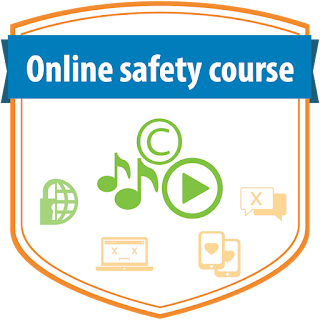Online Safety mooc
My Learning Diary-Stavroula L
Monday, May 15, 2017
Sunday, May 14, 2017
Monday, April 24, 2017
Module 3
Further resources below and find more information and advice on how to tackle this issue:
Activity Module 3.3
My post:
"Yes, I believe that teaching social & emotional skills can reduce cyber bullying because the children can
- augment their self estime
- cultivate empathy, develop role-playing
- solve problems
- activate awareness of the problem
- teach how to control emotion.
Activity Module 3.4
When talking about cyberbullying with your students some aspects might appear more challenging than others. Look at the list below and think about which of the item(s) on the list is the most challenging for you and why? Share your answer in the Padlet below. 1. Worry about my students asking me something I don’t know about. 2. Encourage my students from speaking their minds when the topic is quite sensitive. 3. Switch from lecturing to discussing with my students. 4. Finding the right resources and ideas for activities to start the discussion with my students.
My post:
"The most challenging for me is no 2, encouraging my students speaking their mind of cyber bullying issues. It is a matter of trust for me, so it's a big challenge to inspire them to trust me.
Module 3.5
As the Web We Want handbook for teens was created by young people for young people, the exercises in this new supplement were developed together with members of the Insafe youth panel.
Have a look at the booklet here below:
Further language editions in Croatian, Du
Wednesday, April 19, 2017
Module 2.5 Towards a participatory culture?
 Activity
Activity
How can media literacy contribute to a participatory culture?
My post
"Media literacy do contribute to a participatory culture. An example: on the internet people write stories, which are read by millions of people, especially teenagers. Some of these books are even printed and sold in the commerce.
The same is for music and the arts."
The same is for music and the arts."
Module 2 Fake news
- Fake news has recently drawn a lot of attention in the media.
- It naturally links to the key concept of representation, which has always been at the very core of media literacy teaching.
- Because indeed, just like traditional newspapers, radio or television, digital media do not offer a transparent window on the world, but rather a mediated version.
- They don’t just present reality, they re-present it.
- Even when it is concerned with real-life events, they invite us to see the world in some particular ways and not others.
- In that sense, they are bound to be “biased” rather than “objective.”
ACTIVITY 1.5 Share some of your activities or lesson plans of SID
"These are some of our every year SID activities:"
Safer Internet Day activities
In my class each February we celebrate the Safer Internet Day with several activities. We watch videos and then discuss. We find rules and create posters or make stories with storyboards. We make presentations and play online games and quizzes with students from other classes of our school. We have online videoconferences with eTwinning school partners around Europe and share our thoughts and experience about internet safety issues.
Tuesday, April 18, 2017
Subscribe to:
Posts (Atom)









